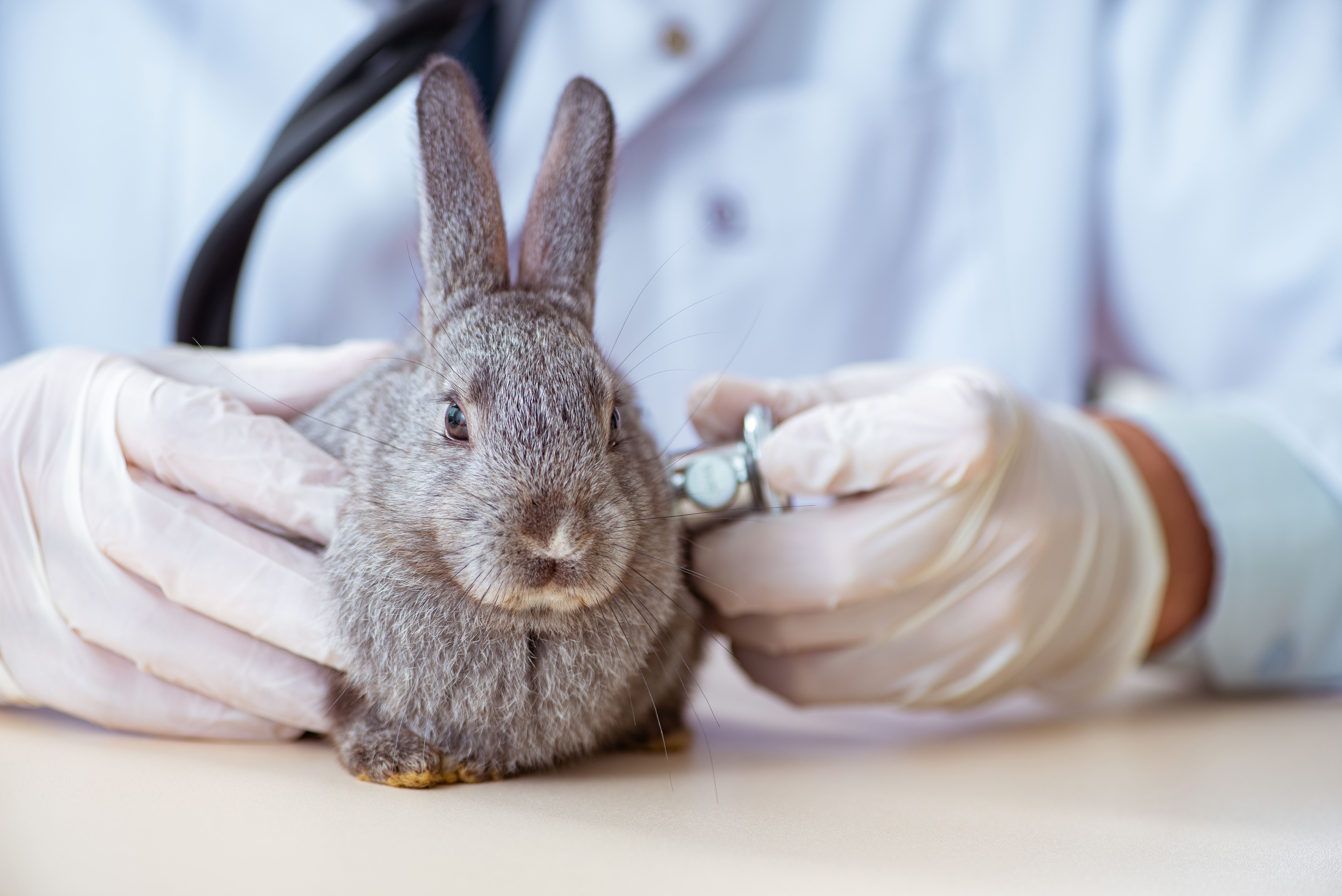Preventing injury in rabbits with proper restraint
In a lecture at the Fetch Charlotte conference, Katrina Lafferty, BFA, RLAT, CVT, VTS (anesthesia/analgesia) discussed the dangers of improper handling for rabbits and best practices for improving outcomes.
Photo: Elnur/Adobe Stock

This article was updated March 16, 2024.
Many veterinarians care for exotic pets from various species. Providing medical care for these patients requires handling unique to each species. As such, many veterinary professionals are not comfortable working with exotic patients, according to Katrina Lafferty, BFA, RLAT, CVT, VTS (anesthesia/analgesia), senior technician in the anesthesia and pain management department and director of the veterinary technician internship program at the University of Wisconsin-Madison, Veterinary Medical Teaching Hospital.1
In a lecture at the 2024 Fetch dvm360 conference in Charlotte, North Carolina, Lafferty discussed basic techniques for safely and humanely handling rabbits for medical procedures.1 “[Rabbits] are probably the most common species that you are seeing if you have a practice that sees any kind of exotic animals,” she told the audience. “These are the third most popular pets after cats and dogs.”
Why proper restraint is important
Lafferty first discussed how improper restraint can injury a rabbit. Fractured legs, damaged pinna, vertebral dislocation or fracture, are some of the consequences of mishandling and can lead to euthanasia.1 “This is why everybody is afraid of bunnies because they’re afraid that they’ll break their back,” she said.
Although muscular in the thighs, she said, rabbits are lighter boned than other species.1 “The reason for this is so that they can move quickly away from a predator,” Lafferty said. “If they’re not against the ground and they kick out their back legs with nothing to stop them, they can actually make a full 180 [degree] arc. That’s where the fracture comes into place. If they kick out their back legs without anything to stop them, that’s where they can dislocate or fracture their backs.”
To prevent vertebral dislocation or fracture, Lafferty said, ensure hind legs are secured. “You’re always supporting the hind end,” she added.1 Handlers should also avoid restraining a rabbit by the ears, which can cause pain and cartilage damage.2
Veterinary handlers can also become injured when using an improper restraint technique with these pets. Lafferty noted that deep scratches and bites are common consequences of mishandling rabbits.1
Using restraint with a caged pet
In removing a rabbit from a cage, Lafferty recommended that handlers do not lift the patient but rather slide the animal toward you. The feet should be on the ground until the rabbit is in the handler’s hand, she noted.1
Handlers should be holding one hand on the scruff of the neck while supporting the rump and /or hind legs firmly with the other hand. Proper restraint of the hind legs will help prevent the pet from kicking, avoiding injuries to the rabbit and handler.1,3
Using restraint during transport
Lafferty said she also secures rabbits during transport by holding a hand on the scruff of the neck, and the rump in the other hand while transporting these patients. “I’m making sure that I’m controlling both ends of the patient,” she said.
Restraining a rabbit during transport can also be accomplished by holding a pet like a football, Lafferty said. In doing so, the patient’s head is placed in the crook of the arm supporting the body with the other hand holding the scruff of the neck.1 “They go into a state of ‘if I can’t see anything, nothing can hurt me’,” she said.
Another restraint technique is “the burrito.” This method requires a towel and swaddling the rabbit, “like a baby,” Lafferty said. None of the limbs should be able to kick out, but she cautioned about wrapping the towel too tight, which can restrict the airway and breathing.1
Additionally, with the burrito technique, the ears should remain exposed.1 “They thermoregulate through their ears,” Lafferty said. “If you have those ears tucked within a towel or a blanket, they’ll overheat rapidly.”
Takeaway
Characteristically nervous, timid and excitable, rabbits can be startled when approached and sometimes resist restraint. Excessive stress is a concern for both the rabbit and handler. Restraining a rabbit in a gentle but firm manner will often cause the animal to calm down.2,3
“Never remove them from the cage without supporting the back end. Never pick a rabbit up by its ears, and never put a rabbit into a cage head first,” Lafferty emphasized.1
For more coverage from Fetch Charlotte, visit our dedicated conference news page at dvm360.com/conference/fetch-charlotte.
References
- You gotta know when to hold ‘em: exotic animal restraint. Presented at: Fetch dvm360 Conference; Charlotte, NC. March 15-17, 2024. Accessed March 15, 2024. https://ce.dvm360.com/learn/course/fetch-charlotte-2024-proceedings/proceeding/fetch-charlotte-2024-conference
- Rabbit handling. University of Bristol. 2023. Accessed March 15, 2024. https://www.bristol.ac.uk/media-library/sites/vetscience/documents/clinical-skills/Rabbit%20Handling.pdf
- Animal specific training: rabbits. University of Wisconsin-Milwaukee Animal Care Program. Accessed March 15, 2024. https://uwm.edu/animal-care/training/manual/rabbits/